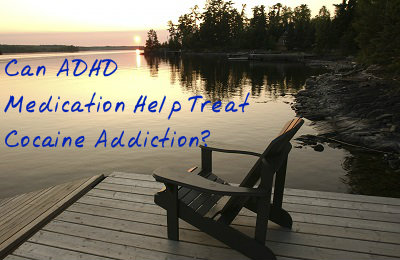Inattention and impulsivity are two mental/behavioral patterns that can substantially lower a person’s ability to function well in a range of social and interpersonal situations. While these patterns are commonly linked to the presence of attention-deficit/hyperactivity disorder (ADHD), they also occur in people unaffected by ADHD. In a study published in November 2013 in the journal Drug and Alcohol Dependence, researchers from the University of Chicago looked at both inattention and impulsivity as potential risk factors for increasing individuals’ sensitivity to the effects of the stimulant amphetamine. Typically, such an increase in drug sensitivity significantly heightens the risks for subsequent stimulant abuse and stimulant addiction.
Inattention Characteristics
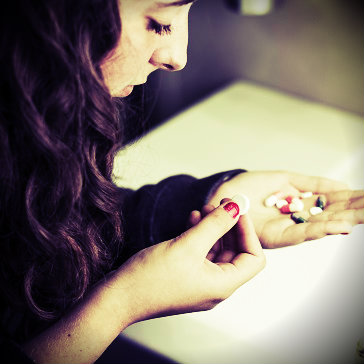 Inattention is the general term for an inability to stay focused on specific events taking place in your current surroundings, stay focused on specific details of your environment or stay focused during personal or group interactions with others. In the context of ADHD, these focusing problems contribute substantially to social and interpersonal dysfunction, characterized by such things as poor academic performance in school or college, difficulties making appropriate social adjustments to changing circumstances, underdevelopment of critical language and math skills, a reduced ability to get or keep a job, and difficulty maintaining personal or intimate relationships. Outside of the context of an ADHD diagnosis, inattention can increase a person’s risks for involvement in accidents or susceptibility to fraud or other deceitful behavior.
Inattention is the general term for an inability to stay focused on specific events taking place in your current surroundings, stay focused on specific details of your environment or stay focused during personal or group interactions with others. In the context of ADHD, these focusing problems contribute substantially to social and interpersonal dysfunction, characterized by such things as poor academic performance in school or college, difficulties making appropriate social adjustments to changing circumstances, underdevelopment of critical language and math skills, a reduced ability to get or keep a job, and difficulty maintaining personal or intimate relationships. Outside of the context of an ADHD diagnosis, inattention can increase a person’s risks for involvement in accidents or susceptibility to fraud or other deceitful behavior.
Impulsivity Characteristics
Impulsivity is a term used to describe a tendency to act without significant forethought, or to act while ignoring previously gained insights regarding the negative potential outcomes of one’s actions. In the context of ADHD, the tendency to act impulsively contributes to the same general forms of social and interpersonal dysfunction that appear in people affected by ADHD-related inattention. Outside of the context of ADHD, impulsivity is linked to increased risks for a group of mental health conditions called personality disorders, as well as increased risks for mania, a highly agitated or excitable state commonly associated with the presence of bipolar disorder.
Inattention, Impulsivity Problems And Susceptibility To Stimulants
In the study published in Drug and Alcohol Dependence, the University of Chicago researchers gave fairly low 20 mg, 10 mg and 5 mg doses of amphetamine to 165 adults with no history of substance abuse issues or other major health problems. After receiving each dose, each of these adults took part in tests designed to measure problems with inattention and problems with impulsivity. Each adult also filled out two questionnaires that helped the researchers gauge their sensitivity to the effects of amphetamine. For the sake of comparison, all 165 participants also went through the same testing procedures after taking a placebo drug dose that didn’t actually contain amphetamine or any other mind-altering substance.
The purpose of the project was to determine whether a high degree of impulsivity or inattention can increase a person’s susceptibility to the effects of amphetamine, and therefore make that person more susceptible to the eventual development of amphetamine abuse, amphetamine dependence or amphetamine addiction. The project’s designers undertook their efforts because, while previous studies had raised the possibility of a link between impulsivity, inattention and increased sensitivity to stimulant drugs, the authors of these studies had not examined this issue in detail.
At the end of the study, the researchers concluded that people affected by unusual degrees of inattention actually experience a decrease in their sensitivity to the mind-altering effects of amphetamine, not an increase. In addition, when amphetamine doses grow larger, people affected by inattention become less and less sensitive to the drug’s effects. The story is different for unusually impulsive people. When these individuals receive amphetamine, they exhibit a strong sensitivity to the drug’s effects. In addition, this sensitivity rises as the administered dose of amphetamine increases.
Results Of Strong Inattention, Impulsivity On Stimulant Abuse
The results of the study published in Drug and Alcohol Dependence indicate that the presence of unusually high levels of inattention may act as a hindrance to developing an abusive or addictive pattern of stimulant use. Conversely, the presence of unusually high levels of impulsivity may act as a factor in the development of these harmful patterns of stimulant intake. If this second point is true, then high impulsivity almost certainly adds to other known risks for developing stimulant abuse or addiction problems, rather than acting on its own as a primary factor.
Read More About Moms Abusing Stimulants
“Mother’s little helper” has been around for decades. In 1966, The Rolling Stones released a hit song about the abuse of drugs, like Valium, by mothers looking to take the edge off a busy day. Now, some moms are using different substances to get through the day: prescription stimulants. Although they can provide a boost of much-desired energy, many women develop a drug addiction to these commonly prescribed “legitimate” medications.
 Prescription stimulants are normally used to treat a range of medical conditions, including attention-deficit hyperactivity disorder (ADHD), narcolepsy, and depression. Common stimulant medications include Dexedrine (dextroamphetamine), Adderall (amphetamine and dextroamphetamine), Ritalin (methylphenidate), and Concerta (methylphenidate).
Prescription stimulants are normally used to treat a range of medical conditions, including attention-deficit hyperactivity disorder (ADHD), narcolepsy, and depression. Common stimulant medications include Dexedrine (dextroamphetamine), Adderall (amphetamine and dextroamphetamine), Ritalin (methylphenidate), and Concerta (methylphenidate).
Legitimate Stimulant Use
Chemically, these drugs are similar to natural neurotransmitters within the brain, including norepinephrine and dopamine. When taken to treat a genuine medical condition, a physician will prescribe the medication at a low level and gradually increase it until the drug produces the desired effects. In addition, the stimulant typically comes in a capsule or tablet form that allows for the slow release of the medication into the body. This slow, steady rise in dopamine mimics the body’s natural production. When used as directed by a physician, ADHD medications and other prescription stimulants are not addictive and produce no high.
Stimulant Abuse And Emergency Room Visits
The effect is different when stimulants are abused, however. Instead of capsules or tablets generating a slow, steady rise of dopamine over time, the pills are crushed before being snorted or they are dissolved in water and then injected. This causes a dopamine rise so rapid that it disrupts the brain and produces feelings of euphoria.
Evidence suggests that drug addiction to stimulants is on the rise. For example, emergency room visits involving stimulant abuse skyrocketed between 2005 and 2010. Visits more than tripled for people over age 26 [1].
Why Mom’s Are Abusing Stimulants
The demands placed on mothers in this culture can feel overwhelming. From single moms to homeschooling moms to moms who work outside the home, many feel the pressure of being the master multitasker. Some mothers turn to stimulants in the belief they will help them focus better on their responsibilities or help them make it through a hectic day. It’s important to note that while these prescriptions can increase concentration in those with a medical need for them, there is no clinical evidence that abusing these drugs sharpens focus.
Women also frequently use stimulants to lose weight. For example, Adderall can speed up metabolism and lower appetite, resulting in weight loss. However, it’s not a healthy or permanent weight loss solution. When a woman stops taking the drug, she typically gains the weight back – and sometimes even more.
Dangers Of Stimulant Abuse
Abusing any drug can have a serious impact on a mother’s emotional and physical well-being; however, stimulant abuse is particularly dangerous. When abused, these medications can trigger irregular heartbeat, heart failure, seizures, and dangerously high body temperatures. As mentioned earlier, stimulants also cause decreased appetite, which, in serious cases, can cause malnutrition. In addition, women addicted to high doses often experience episodes of paranoia or hostility. Instead of helping a mother meet the demands of a busy lifestyle, stimulants make it harder to handle normal responsibilities, including caring for children.
There is also added danger in the method some addicts use to get high. When the drug is dissolved in water, some insoluble fillers in the pill may not break down completely. While these solid pieces are small enough to be injected, they are also large enough to block small blood vessels, creating the risk for serious health complications.
Stimulants are also dangerous because they don’t mix well with other substances. The ER study mentioned above showed that 63% of visits involving stimulants included the use of alcohol, painkillers, sleep aids, or anti-anxiety medications [1]. The use of other drugs adds an additional layer of risk to stimulant drug addiction.
Stimulant Drug Addiction Treatment
If you’re addicted to or abusing stimulant prescription drugs, you need drug rehab treatment. Addicts experience psychological withdrawal from chronic stimulant abuse, so the first step will likely be a medically-monitored detox to wean your body from the drugs.
After detoxification, therapy begins. There are several therapies used to treat this addiction, and your rehab team will recommend one or more based on your situation. Cognitive-behavioral therapy (CBT) is often used to examine the negative thoughts, beliefs, behaviors, and emotions that contribute to addiction. Once you better understand how those contribute to your drug addiction, you’ll learn how to positively change those thinking patterns in order to cope in a healthier way. Although considered a short-term type of therapy, CBT involves a gradual process that takes time and effort in order to be effective.
Contingency management is another treatment that may be used for abuse of Adderall and other prescription stimulants. Sometimes called voucher-based reinforcement (VBR), the program provides tangible rewards for positive behaviors and staying drug free. For example, an addict who stays clean for a specified period of time, as verified through urine samples, may earn a voucher for food, movie tickets, or other goods and services that promote drug-free behavior. The value of the voucher starts low and increases the longer the addict stays clean.
Studies of contingency management show that it can reduce stimulant abuse when used as part of a comprehensive treatment strategy [2]. Additionally, one study suggests that, on its own, contingency management may be more effective at treating stimulant use than CBT alone [3].
Treatment for stimulant drug addiction will also likely include support groups. Often based on the 12-step program first developed by Alcoholics Anonymous (AA), self-help groups provide guidance and assistance to recovering addicts. You’ll be able to connect with others going through the same struggles, which may help reduce feelings of hopelessness or isolation. Meetings are free, and you can attend them for as long as needed to help you stay abstinent.
Drug addiction in mothers can lead to serious consequences for herself and her children. Contact a drug rehab treatment facility about getting help for stimulant abuse or addiction. With treatment, it’s possible to stop abusing drugs and start learning healthier ways to live life, no matter how hectic your life may be.
References:
[1] http://www.samhsa.gov/newsroom/advisories/1301241230.aspx
[2] http://www.ncbi.nlm.nih.gov/pubmed/23138961
[3] http://www.ncbi.nlm.nih.gov/pubmed/16445555
Already this fall one college campus has been rocked by prescription drug abuse. A cheerleader from the University of Minnesota was arrested in September when she was found in possession of drugs without a prescription. This is but a microcosm of a serious national problem. Young people all across America are buying and sharing powerful prescription medications.
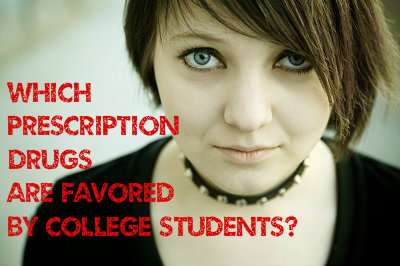 The 18-year-old at the University of Minnesota was seen wandering up and down the halls of her dormitory, seemingly in a drunken state. When officials entered her dorm room they found prescription painkillers but no prescription. They also found an electronic scale and an undisclosed amount of marijuana. She is facing three separate felony charges and potentially five years in prison.
The 18-year-old at the University of Minnesota was seen wandering up and down the halls of her dormitory, seemingly in a drunken state. When officials entered her dorm room they found prescription painkillers but no prescription. They also found an electronic scale and an undisclosed amount of marijuana. She is facing three separate felony charges and potentially five years in prison.
Majority Of College Students Sharing Prescriptions?
But her story is far from unique. One survey reported that 70 percent of college co-eds said they shared prescription medications with one another. A health official told a local news station that that for every one student with a legitimate prescription another five students possess stimulants with no prescription. And the problem is not restricted to college campuses. Another study found that 20 percent of graduating high school students say they have used prescription drugs for non-medical purposes.
One reason prescription drug abuse has escalated has to do with the enormous supply of pills that are floating around where young people can get them. An astounding 210 million prescriptions were written by doctors for painkillers in 2010, and that number has only gotten larger. With that many pills sitting on shelves in homes it’s hard to choke off the supply.
Opiates And Stimulants – Drugs Favored By College Students
The most popularly abused prescription drugs are opiate painkillers derived from the same opium poppy as heroin. When meds become harder to get or start costing too much, kids move on to heroin as it produces similar effects at a fraction of the cost.
Stimulants like Adderall and Ritalin are also popular among young people. These drugs are most often used to treat the symptoms of attention deficit hyperactivity disorder, but healthy kids take them to increase study skills, stay awake for parties and lose weight.
Dangers Of Prescription Drug Abuse
According to the Centers for Disease Control, at least 100 people die each day as a result of prescription drug overdose. The danger is real, though young people seem oblivious. The arrest of a pretty young college cheerleader is just the tip of the iceberg.
24 Sep 2013
Do Teens Know the Truth About Molly?
Who is Molly? Molly is the new name for the decades-old drug ecstasy, the drug that was responsible for three deaths and four people being hospitalized in critical condition over this past Labor Day weekend.
Description Of Molly
Molly is a synthetic, or man-made, drug. It first showed up on the streets in the 1980s as ecstasy. At the time it was called a club drug because young people enjoyed taking it when they went dancing, attended concerts or large parties. Today it’s sold in powder form, usually in capsule form but also sold as pills or tablets, with “Molly” connoting molecular purity.
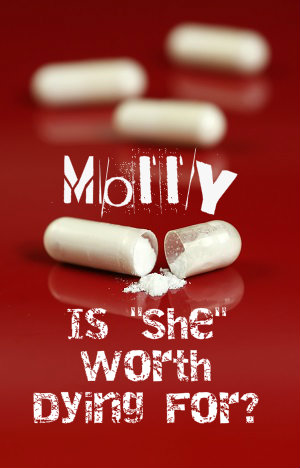 The pills are brightly colored and sometimes emblazoned with cartoonish images. Officially the drug is known as MDMA, which stands for 3,4-Methylenedioxymethamphetamine. If you saw a few words in there you thought you recognized like amphetamine and meth you were right. The drug is a stimulant, or amphetamine, resembling methamphetamine in the way it increases heart rate and stimulation while providing feelings of euphoria.
The pills are brightly colored and sometimes emblazoned with cartoonish images. Officially the drug is known as MDMA, which stands for 3,4-Methylenedioxymethamphetamine. If you saw a few words in there you thought you recognized like amphetamine and meth you were right. The drug is a stimulant, or amphetamine, resembling methamphetamine in the way it increases heart rate and stimulation while providing feelings of euphoria.
MDMA is a concoction combining a stimulant with an empathy-boosting chemical plus a psychedelic. Kids like to take Molly at large group events because the drug makes them feel more energized, less inhibited and closer to those around them. There’s also a sensation of heightened alertness.
Molly’s Risks
There’s also a down-side as it can lead to blurry vision, racing blood pressure and heartbeat and muscle cramps. Sometimes the person’s insides are so revved up that they develop hyperthermia. Long hours of dancing and pressing up against people in a crowd make heat stroke likely. Increased heart rate can easily become an arrhythmia or erratic heartbeat, and seizures have also been known to occur.
MDMA may ratchet up energy and perception but it often pulls down the user’s emotions, leaving them feeling depressed, sad and anxious. Problems with memory can result and these difficulties sometimes last up to a week or more. When a young person decides to mix MDMA with alcohol they increase the sedative effects as well as increasing their risk of becoming dehydrated.
The risk of dehydration with use of MDMA is real, so lots of users try to compensate by drinking more water. However, since it causes the body to retain fluids, the combination of MDMA and water can quickly create an imbalance of electrolytes. Kids who choose to combine Molly with caffeine increase their risk of dehydration while also dangerously increasing body temperature.
Impure MDMA
Called Molly because of supposed molecular purity, the drug is no more pure than any other illicit drug. In fact, MDMA is often cut or completely replaced with another substance known as PMA which produces similar effects. Some deaths attributed to MDMA have actually been caused by PMA. More than that, street drugs are made with no regulating oversight, meaning every batch is unique and users can’t expect one tablet to affect them precisely the same as the last. Many high profile deaths come about because a celebrity is using street drugs in a new city and expecting them to be exactly like those they used in another city — it just doesn’t happen that way.
Celebrity Push Of Molly
Ecstasy, MDMA, Molly — whatever you call it, the drug is enjoying renewed popularity spurred on by pop singers like Madonna, Kanye West and Miley Cyrus. The Monitoring the Future studies conducted by the National Institute on Drug Addiction report that MDMA is experiencing a resurgence among 20-somethings and even high schoolers.
Strong Opportunity For Parents And Teachers
The recent tragic deaths at the Electronic Music Festival in New York provide an opportunity for parents and teachers to talk with teens about the realities of using drugs like MDMA. No matter what pop singers or friends might say, no experience is worth dying for.
Cocaine is an illegal stimulant drug known for its ability to produce physical dependence by triggering long-term alterations in the brain’s normal chemical environment. The common ADHD medication methylphenidate (Ritalin, Methylin, Concerta) bears a strong chemical resemblance to cocaine, but produces less extreme changes in brain chemistry. In a study published in August 2013 in the journal JAMA Psychiatry, a multi-institution research team examined the potential effectiveness of methylphenidate as a treatment for cocaine addiction. The members of this team concluded that the medication apparently reverses some of the critical changes in normal brain function produced by cocaine.
Cocaine Addiction Basics
Cocaine use can lead to physical dependence (i.e., addiction) because the drug sharply boosts the brain’s levels of a specific chemical responsible for producing pleasurable sensations. An individual who experiences this cocaine-related spike in pleasure levels typically heads toward physical dependence when he or she seeks to re-experience the drug’s stimulant “high” again and again over time. In mental health terms, cocaine addiction belongs to a larger illness classification called stimulant use disorder (which in turn belongs to an even larger category of conditions called substance use disorders). This classification includes all forms of addiction stemming from the use of stimulant drugs or medications. It also includes all forms of non-addicted abuse of stimulant drugs and medications. Since issues of abuse and addiction are commonly intertwined, the stimulant use disorder diagnosis replaces all separate diagnoses of stimulant abuse and stimulant addiction.
Methylphenidate Basics
Like cocaine, Ritalin and all other forms of methylphenidate boost the brain’s levels of the chemical responsible for producing pleasure. Methylphenidate has this effect because it has a chemical structure that’s extremely close to the structure of cocaine. However, while cocaine triggers sharp, relatively extreme spikes in the amount of the brain’s pleasure-producing chemical, methylphenidate triggers a smoother, significantly less extreme increase in the amount of this chemical. If it’s taken in a manner not prescribed by a doctor, methylphenidate can easily play a role in abuse/addiction problems, just like cocaine or other stimulants such as amphetamine or methamphetamine. However, when used properly under a doctor’s supervision, it typically presents no unusual abuse or addiction risks.
New Findings
In the study published in JAMA Psychiatry, researchers from Stony Brook University and the National Institute on Alcohol Abuse and Alcoholism assessed the potential usefulness of methylphenidate in easing the effects of cocaine addiction. They decided to use methylphenidate specifically because of its structural resemblance to cocaine and its relatively weak ability to boost levels of the brain’s pleasure-producing chemical. In the same way that doctors can initially treat nicotine addiction with nicotine patches, the researchers wanted to know if it’s possible to initially treat cocaine addiction with methylphenidate. During the study, nine cocaine addicts received a single dose of methylphenidate on two separate occasions. After administering the methylphenidate, the researchers examined the participants’ brains with the help of modern, MRI-based imaging technology.
After reviewing the results of the participants’ brain scans, the researchers found that methylphenidate had two basic effects. First, when compared to a second group of cocaine addicts who did not receive methylphenidate, the addicts who did receive the medication experienced a significant reduction in activity in the part of the brain responsible for boosting pleasure levels. At the same time, these treated addicts also experienced an increase in activity in two other parts of the brain responsible for controlling emotions and regulating behavior. (These two brain areas are typically unusually low-functioning in people with cocaine addictions.) In follow-up interviews, the researchers asked the participants who received methylphenidate a series of questions designed to gauge any real-world changes in their levels of addiction. After completing these interviews, the study’s authors concluded that methylphenidate did indeed weaken the strength of the participants’ addiction-related thoughts and behaviors.
Considerations
The authors of the study in JAMA Psychiatry did not look at the possible effects of long-term methylphenidate treatment on cocaine addiction. However, from their short-term experiments, they concluded that methylphenidate can potentially make brain changes that are critical to disrupting cocaine addiction and giving users of the drug a chance to assert the personal control necessary to successfully take part in long-term cocaine recovery. Despite this potential, the authors note the preliminary nature of their findings and emphasize the need for further research on methylphenidate as a treatment for cocaine addiction or other forms of stimulant addiction. No one should use methylphenidate on his or her own as a cocaine addiction treatment. Such unprescribed and unmonitored use would constitute a form of drug abuse.
Four days after Lindsay Lohan was released for her latest effort at rehab, and just as her latest film, “The Canyons,” is airing on limited release, the 27-year-old starlet was invited to sit down with Oprah as part of OWN’s Oprah’s Next Chapter series. The Aug. 18, 2013, interview commences before an eight-part docu-series, airing in 2014, in which OWN will follow the actress’ life.
“The Canyons” is a provocative, independent Paul Schrader film—an edgy erotic thriller. While the film is receiving mixed criticism, its star actress is receiving excellent reviews for her role. IndieWire called “The Canyons” one of the “50 Indie Films We Want to See in 2013.” Lohan may be, as Oprah describes her in the interview, “both an adjective and a verb for child-star-gone-wrong” but it cannot be said that the famous young actress lacks talent.
Candid Lohan
What Oprah was hoping for, along with millions of viewers, was a new Lohan—an open and candid one. Dressed in a bright tangerine dress, slick ponytail, and with nude lips and smoky but subtle daytime eyes, Lindsay did not disappoint.
“I’m an addict,” the young actress said with no hesitation.
Multiple Addictions
She explained that her addiction is to alcohol, which had served as a gateway to other things, like cocaine. Lohan told Oprah that she’d used cocaine 10 to 15 times, always snorting it. In the past, she’d claimed to have used cocaine only a few times, but said she was scared then of admitting the truth and being judged. Lohan told Oprah that cocaine was not something she enjoyed—she always felt bad the next day—and that she’d used it because it allowed her to drink more, as well as the fact that, “It was a party thing. People would have it, and I’d do it.”

Courtesy of: http://www.nydailynews.com
On the prescription side, Lindsay admitted to having felt reliant on Adderall, and that giving it up might be her biggest challenge. She told the talk show host that she hadn’t used Adderall like many young women and celebrities do to keep weight down or as a stimulant, saying she could eat normally and sleep while using the prescription stimulant. She stated that she had been prescribed Adderall for ADHD and that it had helped her feel “grounded,” but that she is noticing how much calmer she feels without the drug. Lohan explained that she is now learning to feel grounded on her own for the first time, without the assistance of substances.
Fame and Partying at a Young Age
Oprah asked the actress about all the chaos in her life, starting with becoming a star at the age of 12 with the release of “The Parent Trap,” the remake of a 1961 Disney film about twins separated by their parents who find one another and conspire to bring their family back together. When “The Parent Trap” was released, Lohan became instantly famous, and only a handful of movies later, at just 19, she was making $7 million per picture. Paparazzi were following the starlet’s every move and tabloids were busy reporting her partying habits, alleging that her parents were exploiting the young star and even partying with her (even when she was still a minor), revealing her father’s financial misdeeds and habit of landing in jail, as well as her parents’ presumed struggles with addictions.
Crazy Family Events
Lohan told Oprah that no one had been there to guide her and that no one had truly stepped in to help her understand or manage so much money. But she doesn’t blame her parents, not even for the episode in which her father released a screaming telephone tirade between himself, Lindsay and her mother in which Lindsay accused her mother of using cocaine. About the event, Lindsay said she’d come home late from being up too long partying and was behaving in a way she later felt deeply ashamed of. The actress told Oprah that she had lied to her father about her mother using cocaine and had done it simply to hurt her mother.
Chaotic Way
Referring to these former chaotic events and Lohan’s own descriptions of her troubled past, Oprah asked if Lohan didn’t believe she may have been addicted to chaos. She agreed that she was. “I think so. Yeah, it was a comfortable choice to me. What was chaotic to other people on the outside looking in was normal. There is something to be said about me learning to be comfortable with things just being OK.”
Regarding the jail time the young actress was sentenced to for a DUI charge, Lohan admitted that subconsciously, she believes she wanted to go. What she’d needed then was peace from the chaos and ironically, a part of her believed being sent to jail might give her that. She said, “Having all the chaos around me that I was so comfortable with, I somewhere inside knew I wanted to go to jail. And I think that that was subconsciously being put out there just by my actions, or lack thereof.”
New Realization
Lohan’s latest stint in rehab occurred by court order, but she says this time was different, that she is different. Although the judge required that she go, she didn’t fight it like she had in the past. She explained to Oprah that those who worked at Betty Ford and Cliffside Malibu (she spent time in both) must know something she didn’t. She referenced Albert Einstein’s definition of insanity: “Doing the same thing over and over again and expecting different results.” Regarding the judge and the healthcare providers at Betty Ford and Cliffside Malibu, Lindsay said, “I probably need to shut up and listen. You probably do know what’s best because what I’ve been doing hasn’t worked for me in the past.”
During the interview, Lohan referenced her growing spirituality as a source of strength in her life and in her sobriety. She explained, as many recovering people do, that she has no control over the future; she can focus only on today. Regarding what she can try to do to stay well, she said remaining present, clear-headed and focused is most important. While Lohan represents that vanishingly rare breed of young, talented celebrity, privileged with fame and wealth at an early age, she is also perhaps an archetype, the shadow side of celebrity—what happens when beautiful young women are thrust into the spotlight without a hand to guide them or friends and mentors to truly trust. She has been in turn exploited and addicted, though it is too simplistic to say she is either a victim or a villain.
Comparison to Classics
While many consider her a Hollywood punch line, Lohan has the smoky voice and cool, sensual beauty of certain classic ladies of Tinseltown’s epic past. It would be easy for her world to burn up in a flashbulb second like the brilliant, beautiful lives of women who’ve come before her: Judy Garland, Marilyn Monroe, Lani O’Grady or any of the other talented women who died too soon. Although it is never easy to remain forever on the road to health and success, and rarely continuously achieved for recovering addicts, least of all for the newly recovering or for people whose lives are so closely watched and judged, we can hope for the best for this young star. She may have her best work still ahead of her.
The Next Chapter
About her “next chapter,” Lohan told Oprah, “[I’m ready] to get the thing that has made me happiest my whole life back, which is to work really hard, stay focused and prove myself. I have to regain trust in people, in my career, that had doubts, and I fully respect that on their behalf. As long as I stay honest in myself and do the work I’m willing to do and have been willing to do and am doing, then nothing can stand in my way. I am my own worst enemy, and I know that.”
02 Sep 2013
Taking Drugs to Boost Grades
For some, college was a time for sleeping in and goofing off. For others, memories of college are associated with stress as students worked to achieve good grades while juggling intense academic requirements, extracurricular activities and relationships with a new level of personal responsibility.
The stakes are high. Students understand that their grades will help them secure a good job with financial security. Competition can be fierce to not only be accepted into but also remain in specialty colleges within the university that teach skills to teachers, therapists, accountants and engineers.
 “Smart Drugs” Not so Smart
“Smart Drugs” Not so Smart
Recently, ABC affiliate 13WHAM of Rochester, New York, highlighted one way that students choose to handle the pressure – misusing prescription stimulants to increase focus and eliminate the need for sleep, known as “smart drugs.”
Adderall is just one brand name drug that students abuse as a study aid. Prescribed to treat attention deficit hyperactivity disorder (ADHD), the drug is so widely issued by doctors that students find it relatively easy to obtain as friends may be willing to sell their extra pills.
A study published in The Addiction Journal indicated that the problem is becoming widespread. One in four college students indicate they have used pills to get through an exam or other stressful academic situation.
The 13WHAM story profiles an individual under the pseudonym of Steve who regularly uses stimulants to meet academic requirements. He said the medication increases focus and avoid sleeping, allowing for a 72-hour straight study session he did when taking 60 milligrams of Adderall, which paid off with good grades.
Adderall Abuse & Risks
Adderall abuse is becoming more common and the effects of the drug can lead to increased medical interventions and the need for emergency care.
Students are unaware of or underestimate the risks associated with the misuse of prescription drugs. They may believe that prescription drugs are somehow safer than street drugs or that there isn’t a risk of mixing drugs with other medications. Experts, on the other hand, warn that the drugs can be extremely dangerous, with adverse reactions including stroke, heart attack and psychotic episodes.
13WHAM reported that university health center doctors were seeing increased attempts by students to get prescriptions for stimulants as finals approached. The physicians said that while they are generally able to help students who have a diagnosis for ADHD, it takes more than one exam session to determine whether a student is abusing stimulants.
What Parents Can Do
Parents should take time to talk to their college-age children about the risks of using stimulants. They can also speak openly about their opinions and rules related to substance use. While students enjoy an increased level of freedom at college, many are still receptive to their parents’ viewpoint while they are receiving support, both financial and otherwise.
While parents may doubt their influence, particularly after their teen has left home to pursue a degree, studies show that parents play an important role. Teens who abstain from substance use repeatedly indicate that their parents were influential in helping them decide not to use substances.
Parents can also be a source of support for their college-age child as they face the intense pressure and competition to succeed in school. Keeping an open conversation about the challenges and expectations involved with getting a degree may help a student avoid making poor decisions related to stress management.
30 May 2013
Do Some Businesses “Reward” Drug Abuse?
An article in the Australian Business Review Weekly tells the story of “Ruth,” a high finance worker in Sydney who left her job because she wanted to stop snorting cocaine. According to her story—which was told to an Australian rehabilitation worker—substance abuse was a 24-hour habit in her business, with executives constantly sneaking off to the bathroom for a pick-me-up.
Substance abuse specialist Josette Freeman argues that it isn’t unusual in that sort of industry, claiming that meetings over wine and dinner with clients often descend into cocaine-taking, and even that the high stress and production-focused businesses essentially reward drug abuse by ignoring the issue if it benefits them. In the United States, it’s estimated that business owners lose $100 billion per year as a result of drug abuse—and the facts about its impacts don’t paint the sort of picture these businesses might imagine.
“Benefits” for Businesses
According to the US Department of Health and Human Services, in 2009 77 percent of illegal drug users had either part time or full time jobs. Given the high rates of substance abuse amongst lawyers, it seems reasonable to assume that other high-level professions will also be affected.
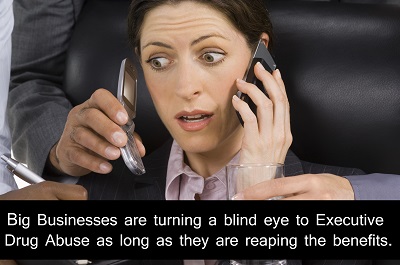
If you place yourself into the shoes of a business-owner or other employer (with a limited capacity for foresight), you can see that there are several superficial benefits to a drug-using workforce. Most drugs don’t even have these, but stimulants like cocaine generally increase alertness, help people stay awake, improve mental performance and reduce appetite. If you think coldly and callously, as if you’re only interested in making a profit, these effects are big plus-points for stimulant use in the workplace. You feel like you’ll get an active, focused and dedicated work-force, willing to pull long hours and with an almost constantly positive morale.
According to Josette Freeman—whose work for drug rehabilitation group SMART has put her in contact with many white-collar addicts—“there are a lot of workplaces where they don’t care too much about the workers if they are producing.” This is at least echoed in the legal profession in the US, where the problem is often ignored and allowed to continue.
Risk Factors for Workplace Drug Abuse
There are numerous different elements which can make workplace substance abuse more likely. A particularly important one is stress (which will be addressed in detail later) but many other factors such as long or irregular shifts, tiredness, repetitive duties, isolation, ease of access to substances, lack of supervision and low job satisfaction are also notable risk factors. Some of these (such as stress, tiredness and long hours) would typically be more likely to affect higher-level workers, but others (such as repetitive duties and low job satisfaction) are a particular concern for blue-collar workers. Regardless of the specific risk factors, most jobs evidently carry some inherent risk of substance abuse.
The Importance of Stress
Stress is a key factor when it comes to any type of substance abuse, and this is particularly relevant for high-level professions that carry a lot of responsibility. The mechanism by which stress contributes to addictive behavior has also been studied, but it’s important to understand that stress only creates a susceptibility to addiction. It all depends on how individuals deal with the stresses of the workplace. Healthy coping mechanisms that don’t rely on substances enable most workers to manage stress without relying on substances as a mood-elevator. However, not everybody has these coping mechanisms.
For individuals with less healthy stress management strategies, a high-stress job in the financial or legal industries can easily lead them down the road to substance abuse. As mentioned in the previous section, this is particularly likely if there is easy access to substances in the workplace. This means that if there is a “culture” of drug abuse in the office, anybody exposed to high levels of stress is especially likely to get sucked in. To truly combat the issue of workplace substance abuse, employees have to be taught healthy coping mechanisms and about the long-term effects of drug abuse in the workplace.
The Truth of the Matter
As you may expect, workplace drug abuse—which may have an initial appeal to some employers and employees—ultimately reduces productivity, increases the number of absences, and makes regular changes in employer even more likely. Even stimulants, which initially seem like productivity-drugs, can cause panic, aggression, suicidal thoughts, paranoia, and hallucinations in chronic (long-term) users. On top of this, stimulant users ordinarily binge and then “crash” in a period of little activity characterized by depression, anxiety, and cravings.
Workplaces need to remain vigilant against drug abuse, and it’s advisable to have a policy in place for dealing with workplace substance abuse. In addition to educational programs to increase awareness, it’s important for employers to provide access to treatment and support. Businesses should also be clear about testing protocols and commit to disciplinary action where required. It’s a problem that spans all workplaces, and all businesses must take steps to protect against it.
Read more about The Dangers of Recreational Drug Use Here


